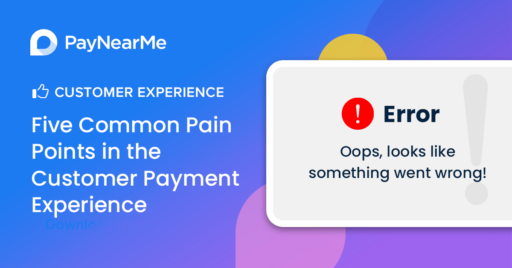Mobile-First. What Does This Mean?
Author: Luan Tran, Director of Product at PayNearMe
Buzzwords like “progressive enhancement” and “responsive design” seem more and more commonplace in the world of web design, but what does a mobile-first strategy really mean for businesses and consumers?
Ever since the widespread use of responsive design made it the norm for website designs and applications to automatically adjust to differently sized screens, UX/UI designers can create just one design for all platforms, and users can easily browse it on desktop, tablet, or smartphone devices. Traditionally designs were done with the assumption that visitors will use the application on a desktop. This desktop focused design is then scaled down to fit tablets and smartphones in a process known as graceful degradation, which often results in applications that are poorly adapted for mobile devices.
In recent years, using a mobile-first strategy has become increasingly popular for businesses and their customers. By turning the graceful degradation process on its head, a mobile-first approach encourages progressive enhancement by designing applications with the smallest mobile device in mind and scaling up to adapt to larger screens. Because mobile devices are small and allocate for less elements, mobile-first design priorities the quality of content above all else. This means that user experience is simpler and standardized on all platforms; loading times are shorter, and only the essential functionality is included.
Most importantly for both businesses and consumers, the design favors mobile device experiences, which makes sense considering that, according to Comscore, the number of mobile-only adult internet users exceeded the number of desktop-only internet users back in March 2015. Desktop usage has been on a decline, while a mobile focus has taken center stage. Also, note that 95% of Americans now own a cellphone of some kind, and the share of Americans that own smartphones is now 77%, based on a smartphone ownership survey done by Pew Research Center in February 2018.
With PayNearMe’s approach, businesses can deliver a richer user experience with a simple, consistent three-step process across all tender types. By focusing on the vital elements in the application design process, PayNearMe’s platform seamlessly transitions from smartphone to tablet to desktop. This is why PayNearMe customers enjoy over 50% of payments made via a mobile device, compared to the industry average of approximately 6%.
A platform that is great for mobile puts content at the heart of the user experience. We continuously iterate through testing and data to deliver an experience that ensures payments made from a smartphone are both simple and secure.
To learn what higher mobile bill pay adoption can do for your business, email us today at sales@paynearme.com.




